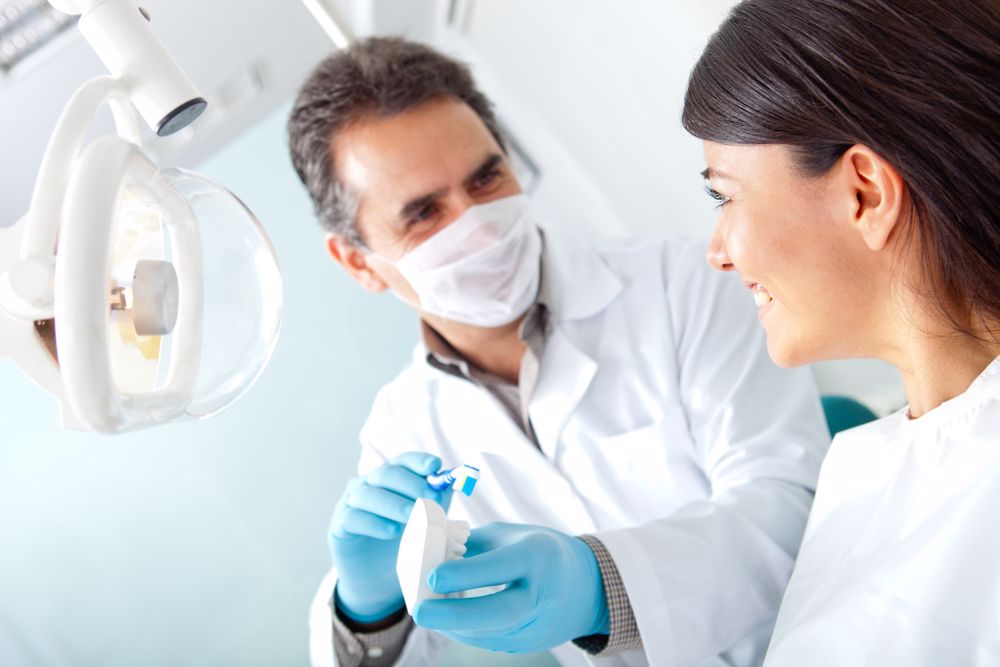Set your practice up for success with our eBook. Discover how to improve patient experience and boost revenue.
Download eBook5 tips to increase treatment plan acceptance and improve patient education
Dental patient education can be one of the most impactful steps to guiding an individual to better oral health outcomes and converting treatment plans. After all, if you are unable to convince patients of the seriousness of a condition or the wisdom and importance of a treatment plan, even the best-designed course of action cannot succeed.
Patient education has traditionally been a low-tech, simple process of explanation between dentist and patient. A scholarly study of dental practitioners carried out a decade ago indicated that in 99% of cases, practitioners verbally educate their patients, but only use digital educational resources in 17% of cases. Typically, in 58% of cases, practitioners spent 10 or fewer minutes speaking with their patients.
There is room for improvement in multiple senses. Your practice can start instructing patients through more channels, get technology involved in the process and spend extra time and effort on this step. When you improve your patient education strategies, everyone benefits, as your practice gains commitments to continue treatment, your business gains revenue with a higher rate of plan conversions, and your patients’ oral health can drastically improve through their completion of the long-term plans laid out for them.
5 ways to improve patient education
The following are five distinct ways to give your patients more information about their conditions and potential treatment options in ways they will understand and appreciate. Any combination of tactics can have an immediate impact on the dentist-patient relationship and smooth the path to positive patient outcomes.
1. Educate your staff members extensively
Patient education can benefit immensely from more people within your practice knowing about the procedures you offer and being available to pass that knowledge on. As dentist and Dental Education contributor Gordon Christensen noted, many members of your practice staff should be able to explain what various procedures entail, so they can help patients be confident in selecting a treatment.
The amount of time patients spend with dentists is a relatively small fraction of their overall engagement with a practice. When dental assistants or front-desk staff know enough about common procedures to educate patients, your chances of receiving acceptance increase.
2. Offer online patient education resources
Today’s customers like to educate themselves independently. Dental patients are no different and, as such, you should offer them plenty of informational materials to support this self-guided learning style so they can make their own well-informed choices about treatment plans.
To make the educational content as easy to consume as possible, you can opt for informational videos embedded in your website. With a single click, patients can get a detailed audiovisual overview of dental, orthodontic and aesthetic procedures that might benefit them.
3. Create a great waiting room experience
While on-demand online patient education resources are an important part of the overall experience of informing your patients, video content has more applications within your practice. For example, when people are in the waiting room in advance of their appointments, they are an ideal audience for informative content to help educate them about their treatment options.
Setting up a smart TV in your waiting area that plays a rotating selection of informative videos is a good way to subtly inform your patients. You can mix in premade content with custom-created imagery designed by your practice to ensure people get a realistic and relevant overview of the types of procedures you offer. Offering this kind of familiarity right before patients are called for an appointment may boost acceptance on the spot.
4. Augment chairside education with technology
While chairside is the No. 1 place to give patient education — with the dentist or hygienist and the patient face to face — your practice might have room for improvement at this critical juncture. For example, how are you using digital technology? When you have access to interactive multimedia presentations explaining common treatments in detail, this can help you drive acceptance.
While a dentist or hygienist can provide good education verbally, those efforts may gain clarity when combined with images and videos that walk people through the actual necessity and experience of a given procedure. Visual content can also save time or overcome language barriers, making explanations quicker and more universally comprehensible.
5. Get patients’ senses involved
Dentistry IQ noted that sometimes, the best way to get a patient to understand the exact nature of their oral health issues and potential solutions is to give a demonstration they can feel or see as well as hear about. Considering that a dental appointment is a naturally multisensory experience, there are plenty of chances for learning.
For instance, a dentist encountering a tartar buildup with an explorer can take that moment to explain to the patient what is going on and how they should proceed to improve the issue in the future. Being very clear about showing build-up on instruments can also convince patients of an issue in a way that just telling them about it might not.
A quick path to improved patient education
When your practice has the right technology tools in place, it’s simpler to create a positive patient education experience. For instance, you should ensure your practice management solution is compatible with the digital multimedia solutions that make for compelling demonstrations, whether patients are in an appointment, in the waiting room or logging onto your website from home.
Reach out to the experts at Centaur Software to learn about the suite of xPlain Dental Patient Education Products and much more.
Related Posts
-
5 tips to increase treatment plan acceptance and improve patient education
Published: 13/4/2021Dental patient education can be one of the most impactful...
-
7 Ways to connect your practice to your patients (Infographic)
Published: 31/3/2021A strong and natural sense of connection between patients and...
-
Starting a New Dental Practice Checklist
Published: 3/11/2020Are you ready to strike out on your own and...



